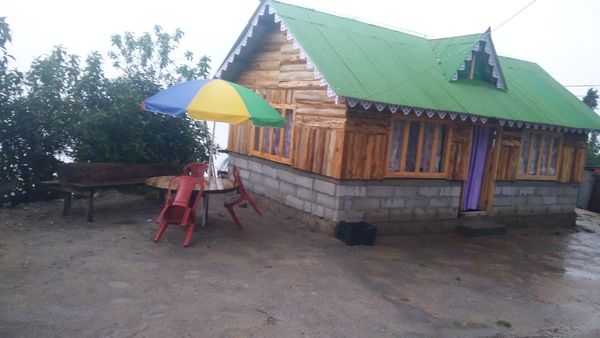Best Materials for a Durable and Stylish Dressing Table
 Woodenstreet Fueniture
10 May, 2025
7 mins read
262
Woodenstreet Fueniture
10 May, 2025
7 mins read
262

When investing in this piece, it's important to ensure it not only matches your interior but is also made from materials that promise long-term durability and aesthetic appeal. Choosing the right material can elevate both the functionality and style of your dressing area.
The Timeless Appeal of Solid Wood
Solid wood remains one of the most popular and enduring materials for furniture, including dressing tables. It offers unmatched strength, longevity, and a timeless look that never goes out of style. A wooden dressing table made from hardwoods like oak, teak, sheesham, or walnut can last for generations with proper care. These woods resist daily wear and tear, making them a great choice for frequent use.
Apart from durability, solid wood adds warmth and natural beauty to any space. Each piece of wood is unique in its grain and texture, giving the dressing table a character of its own. Whether your décor is traditional or modern, a wooden dressing table effortlessly complements the setting. Its ability to age gracefully adds to its charm, as the finish and polish can be refreshed or changed over time to match evolving tastes.
Engineered Wood for a Budget Friendly Option
For those looking for a more economical alternative to solid wood, engineered wood is a reliable choice. This material is crafted by binding together wood particles, fibers, or veneers to form a sturdy panel. Common types include MDF (Medium Density Fibreboard), HDF (High Density Fibreboard), and plywood. These boards are often finished with laminates or veneers to give the appearance of natural wood.
Engineered wood dressing tables are generally lighter, more resistant to warping, and easier to move. They also come in a wide range of finishes, allowing homeowners to explore different textures and colors without a heavy price tag. While they may not last as long as solid wood, good-quality engineered wood can still offer several years of use, especially when properly maintained and placed away from moisture.
Metal for a Modern and Minimalist Look
Metal is another material that is gaining popularity in contemporary furniture design. A dressing table made from metal or one with metal accents gives a clean, industrial, and minimalistic look. Steel and iron are the most commonly used metals for frames and legs, often paired with glass or wood for the tabletop and drawers.
The durability of metal is unquestionable. It is strong, stable, and resistant to common issues like termite infestation or cracking. A metal-based dressing table is ideal for modern interiors where simplicity and function are prioritized. Moreover, the sleek lines and polished surfaces reflect light and add a sense of openness, especially in smaller rooms.
Glass for a Touch of Elegance
Glass is not a material traditionally associated with dressing tables, but its use in modern design is growing rapidly. Glass-topped tables or those with mirrored finishes bring a sense of sophistication and lightness to the space. Though not as robust as wood or metal, tempered glass is surprisingly strong and resistant to scratches and heat.
In combination with a metal or wooden frame, glass creates a striking contrast that works well in contemporary and glamorous setups. The reflective surface also makes the room appear more spacious and bright. However, care must be taken to prevent heavy impacts and keep the glass clean and fingerprint-free for a polished look.
Combining Materials for Versatility
One of the best trends in furniture design today is the use of mixed materials. Combining wood with metal, or glass with engineered panels, can result in dressing tables that are both stylish and sturdy. For instance, a wooden dressing table with metal legs can provide the rustic charm of wood along with the strength and edge of metal. This fusion not only enhances visual appeal but also increases structural integrity.
Such designs cater to different tastes and needs, giving you the freedom to match the piece with your décor while ensuring it remains functional for years. Mixed material dressing tables also allow more customization in terms of color, size, and style.
Choosing What Works for You
When selecting a material for your dressing table, consider your lifestyle, usage, and the interior design of your room. A wooden dressing table suits classic and transitional settings and offers great durability. If you're furnishing a guest room or a space that sees less use, engineered wood may be sufficient and more budget-friendly. For ultra-modern homes, metal and glass combinations can provide a chic and streamlined look.
While aesthetics play an important role, don't overlook practical factors such as storage needs, ease of maintenance, and resistance to damage. A well-chosen dressing table not only adds to your room’s appeal but also becomes a personal sanctuary that serves you well for years to come.
Conclusion
Choosing the right material for your dressing table is key to balancing style and longevity. Whether you opt for the richness of a wooden dressing table, the affordability of engineered wood, the sleekness of metal, or the elegance of glass, each material has its unique advantages. Investing in quality and considering your personal needs will ensure that your dressing table remains a beautiful and functional part of your living space.
Written By:
Woodenstreet Fueniture



Hotels at your convenience
Now choose your stay according to your preference. From finding a place for your dream destination or a mere weekend getaway to business accommodations or brief stay, we have got you covered. Explore hotels as per your mood.


